The morning in Hanoi started with drizzling rain, but we no longer cared. After breakfast, we took a taxi to the railway station, found our seats and the train left on time at first occasionally going through narrow passages between residential buildings, at less than a metre from someone’s windows, walls and balconies. We had already seen that from the street a couple of days earlier, but now we saw it from the train itself.
Our next destination was the town of Ninh Binh or rather a small place in its vicinity – Tam Coc. We transferred from the railway station to Tam Coc in the centre of which there is a spacious plateau that extends to some lake-like water where we saw numerous boats. It is possible to go also from here on one of the numerous trips organized locally and it may be seen that tourism continues to be developed, since we walked to the homestay we had booked earlier following a path that goes parallel to a resort under construction. There were also many other construction sites we could see both in the place and around it.
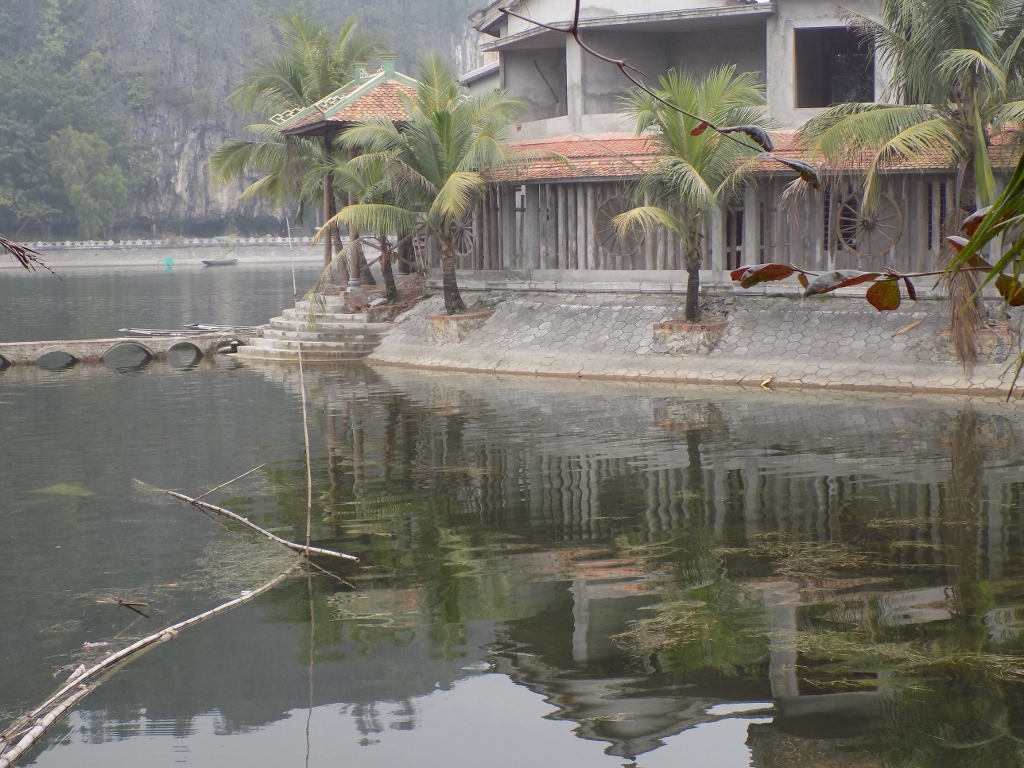 A resort under construction on the shore of the lake in Tam Coc
A resort under construction on the shore of the lake in Tam Coc
First we settled and had lunch at that nice homestay that consisted of several rooms built as separate houses surrounding a nice garden. There was also a dining-room/terrace. The kind hostess immediately showed us on a map what could be seen in Tam Coc itself as well as in its surroundings, so to start with we rented bikes.
Right after lunch we got on the bikes and a few kilometres away we came to the place where Bich Dong pagodas are located. We left the bikes at a bike-parking of a sort. An elderly women working there, while speaking only Vietnamese, pointed with gesticulation to one side, then to another side all the time babbling something. Hmm?
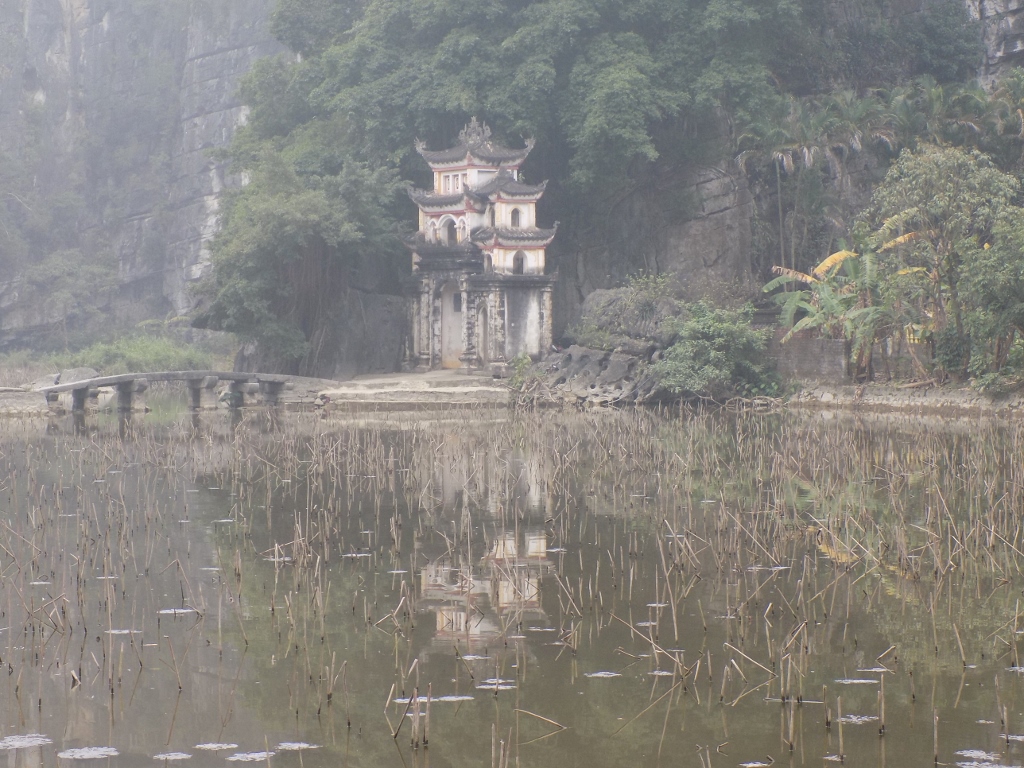 A rice paddy in winter and the gate to the Bich Dong pagodas
A rice paddy in winter and the gate to the Bich Dong pagodas
So, we headed to the one side and there the path took us over an elevation between two limestone formations and led us into a small valley. Not really knowing what we were doing there, we continued along the path and then we were approached by a local farmer who showed us to follow him, while holding a flashlight in his hand. And so we went into a cave at the entrance of which there was a gate which the farmer first unlocked and then locked again once all three of us were inside. Hmm? We were puzzled and felt a bit awkward, but thought the numbers and size were in our favour. Still, he had no hidden agenda and took us around the small cave, all the time hysterically flashing with the torch and jabbering something in Vietnamese, while the two of us followed him perplexed. In one section he showed us some cave walls that were blue. I thought that this certainly was no art of some prehistoric civilization, but rather that they had some left-over material from the last painting of the house so they decided to use it up, thus making their local small cave “interesting.” (A few days later I was to realize I was completely wrong about this.) Luckily, our tour did not take long, so after getting our and giving him a tip, we were free to continue. We ventured a little more into the valley and then simply returned following the same path.
The other direction previously shown to us by that elderly woman was in fact the real way to the Bich Dong pagodas. By the way, let me reiterate which is the difference between temples and pagodas (in the Vietnamese sense of meaning). From the outside, these are practically the same type of structures built in a traditional style and they both serve religious purposes, i.e., for placing offerings on altars. To me, they also appeared rather similar on the inside as well. The difference is only in the statues that are inside and that are worshipped there. If these are some historic figures, emperors, kings, mandarins and heroes, then it’s a temple. But, if there is a statue of Buddha inside (including also the female Buddha), then it is a pagoda and this is a Buddhist temple then.
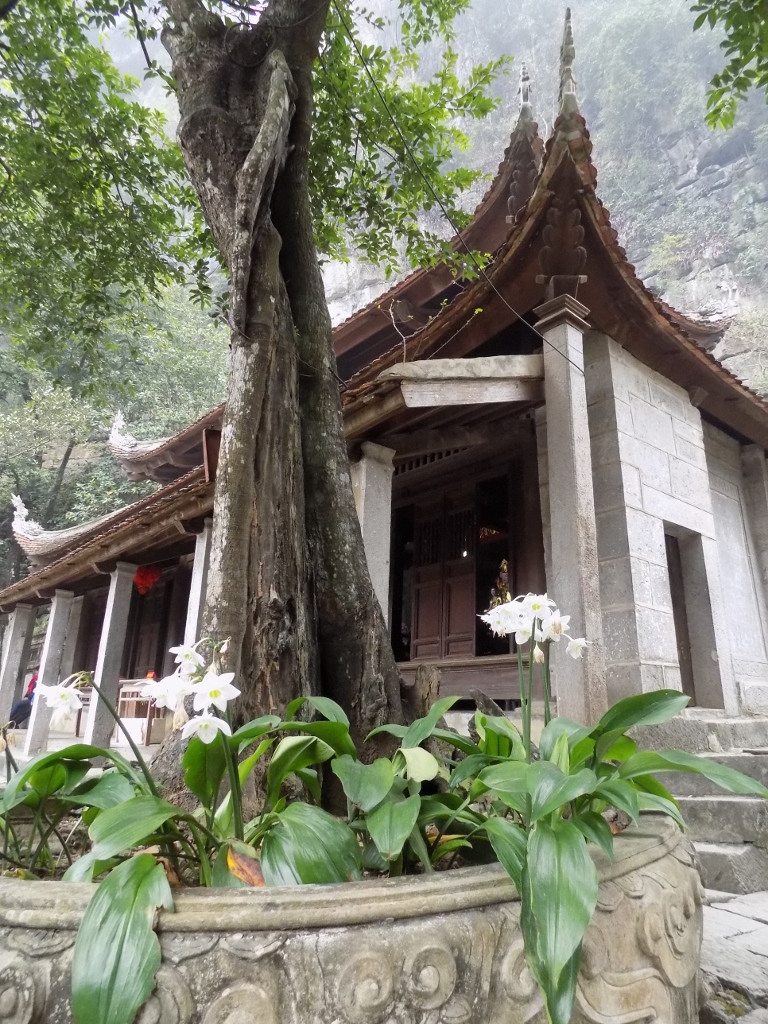 The first pagoda within the Bich Dong complex
The first pagoda within the Bich Dong complex
The Bich Dong complex consists of three pagodas distributed vertically. They were built in the 15th century, with subsequent reconstructions. When you visit the first one, on the “ground floor,” you take steps leading uphill and thus you came to another pagoda, which with its back part simply squeezes under a large rock shelter that exists in the vertical wall of the limestone formation.
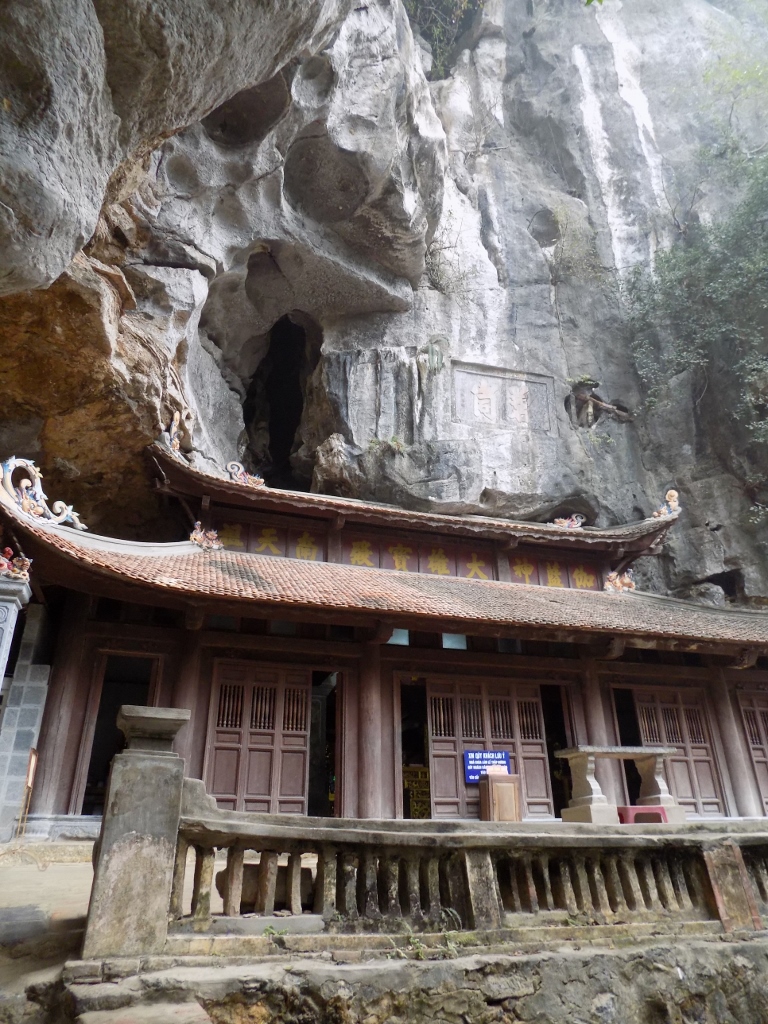 Second pagoda within the Bich Dong complex
Second pagoda within the Bich Dong complex
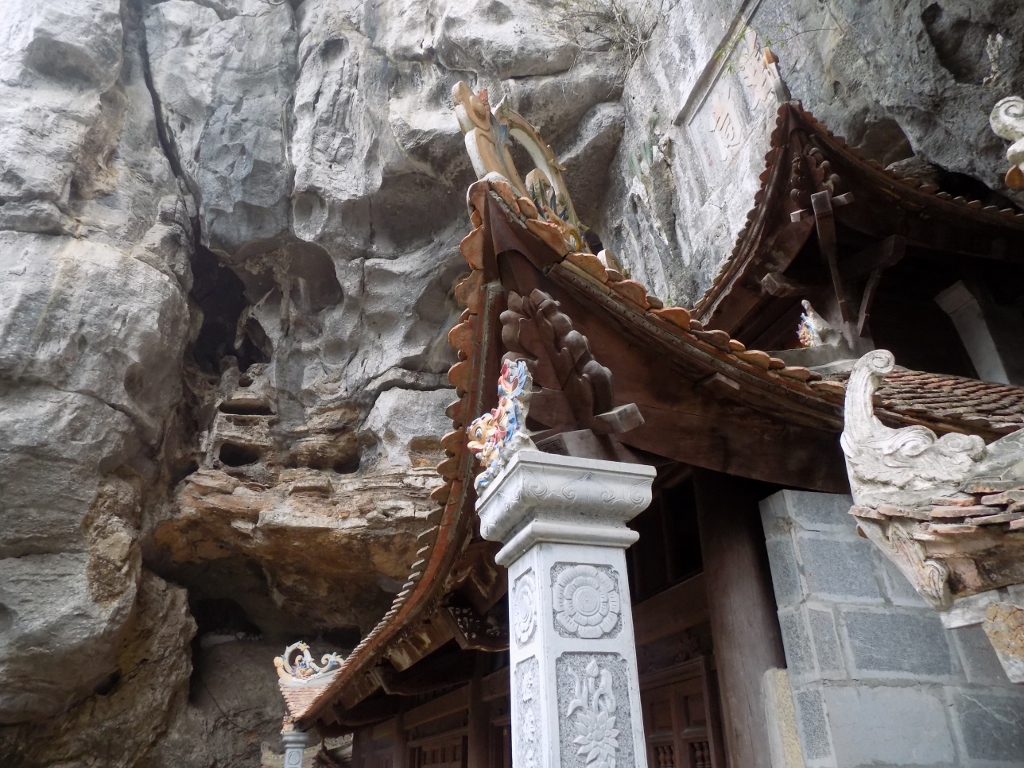 Second pagoda within the Bich Dong complex, a detail
Second pagoda within the Bich Dong complex, a detail
But, when you follow a path to the left from the pagoda, the path takes you into a cave behind the structure, then to a broad staircase that leads further up through the cave, and then from that cave you go out again. Near this exit, there are a couple of altars.
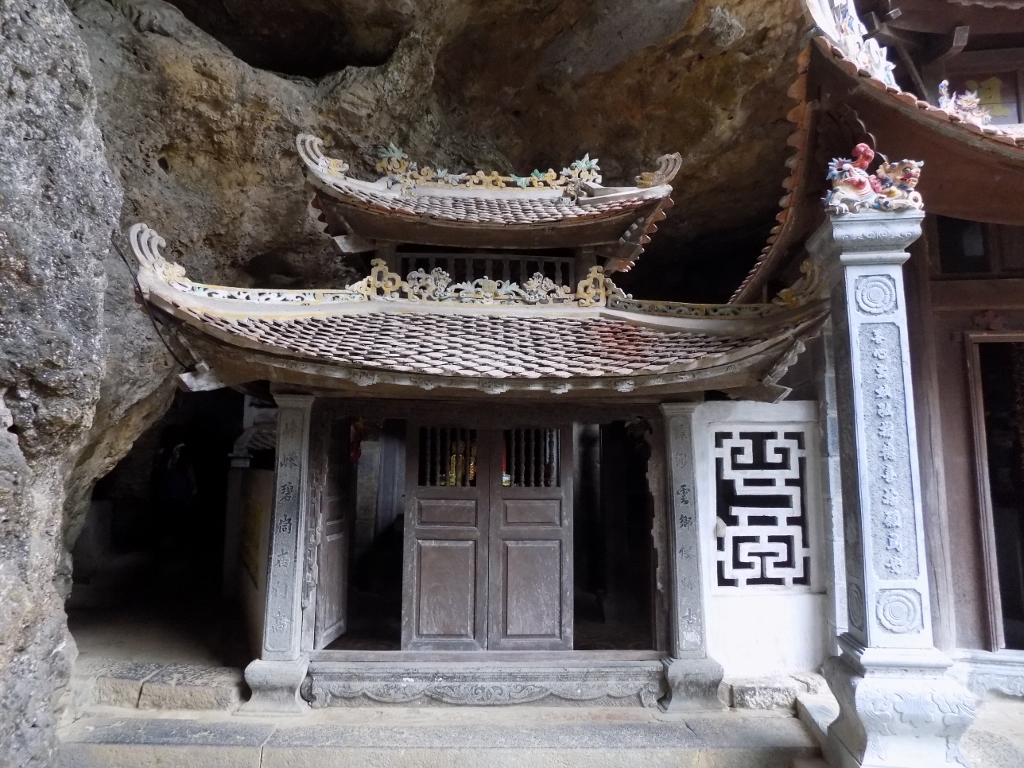 To the left is the passage beside the second pagoda that leads through a cave up to the third pagoda
To the left is the passage beside the second pagoda that leads through a cave up to the third pagoda
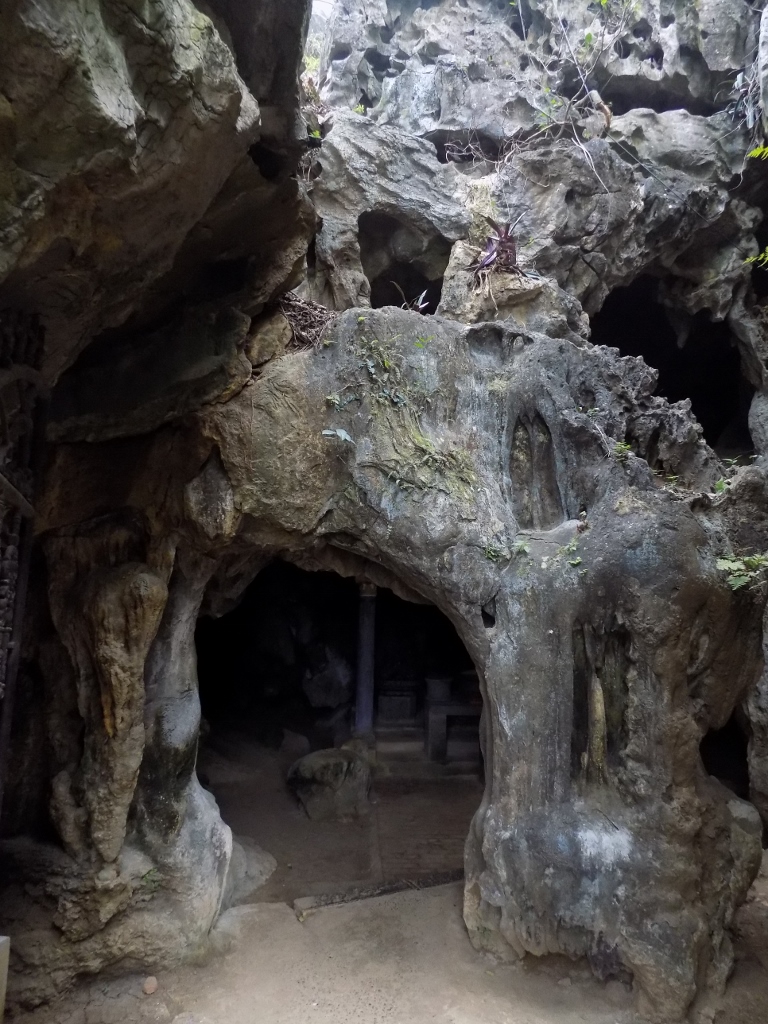 Exit from the cave between the second and third pagodas – inside it is possible to see parts of altars
Exit from the cave between the second and third pagodas – inside it is possible to see parts of altars
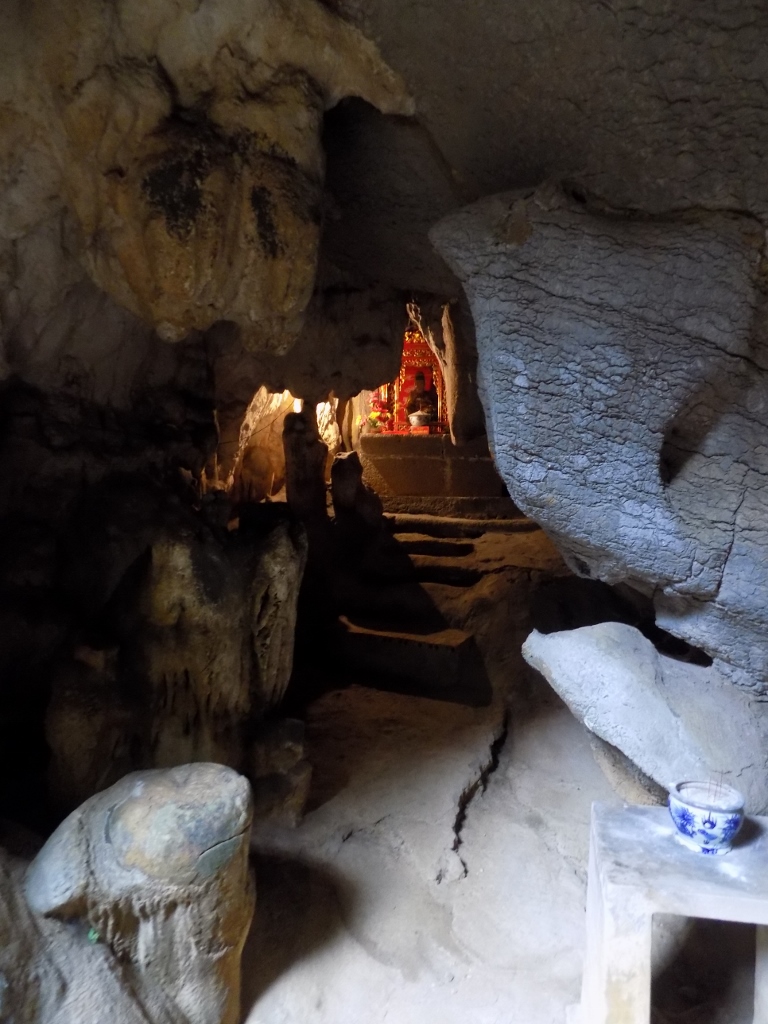 An altar in the cave
An altar in the cave
Then you go up a flight of stairs again, thus reaching the third pagoda. Everything was very pretty and picturesque.
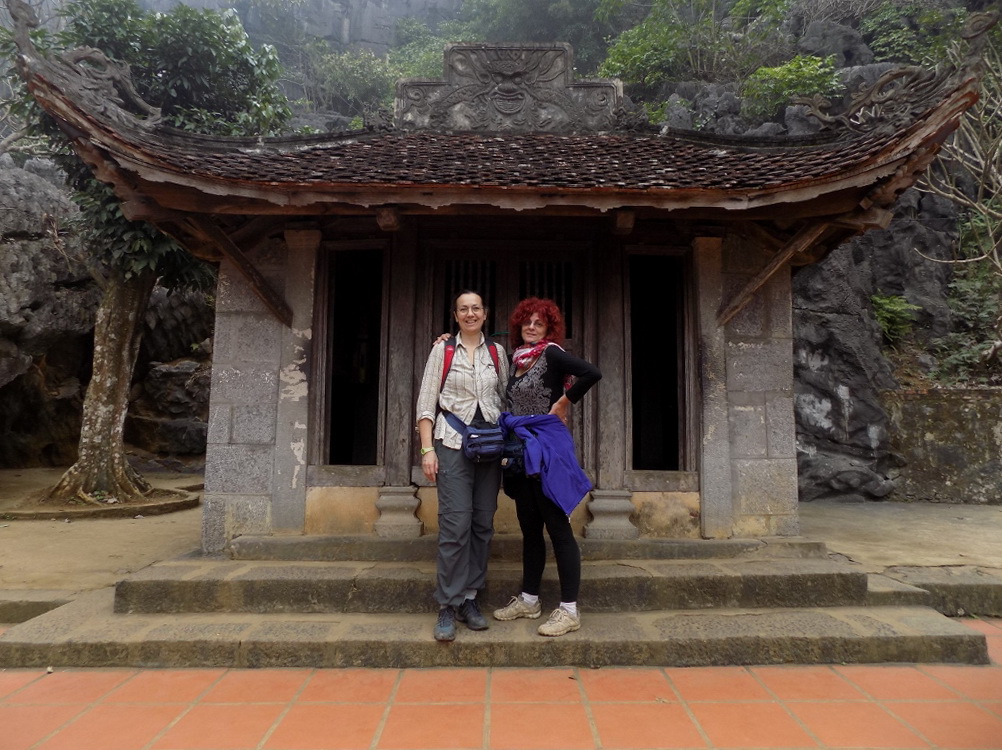 In front of the third Buddhist temple, the Bich Dong complex
In front of the third Buddhist temple, the Bich Dong complex
From the plateau in front of the third pagoda, it is possible to enjoy a beautiful view. Or so the people say. On this occasion, we could only look at the “mystic” mist that permeated everything around us.
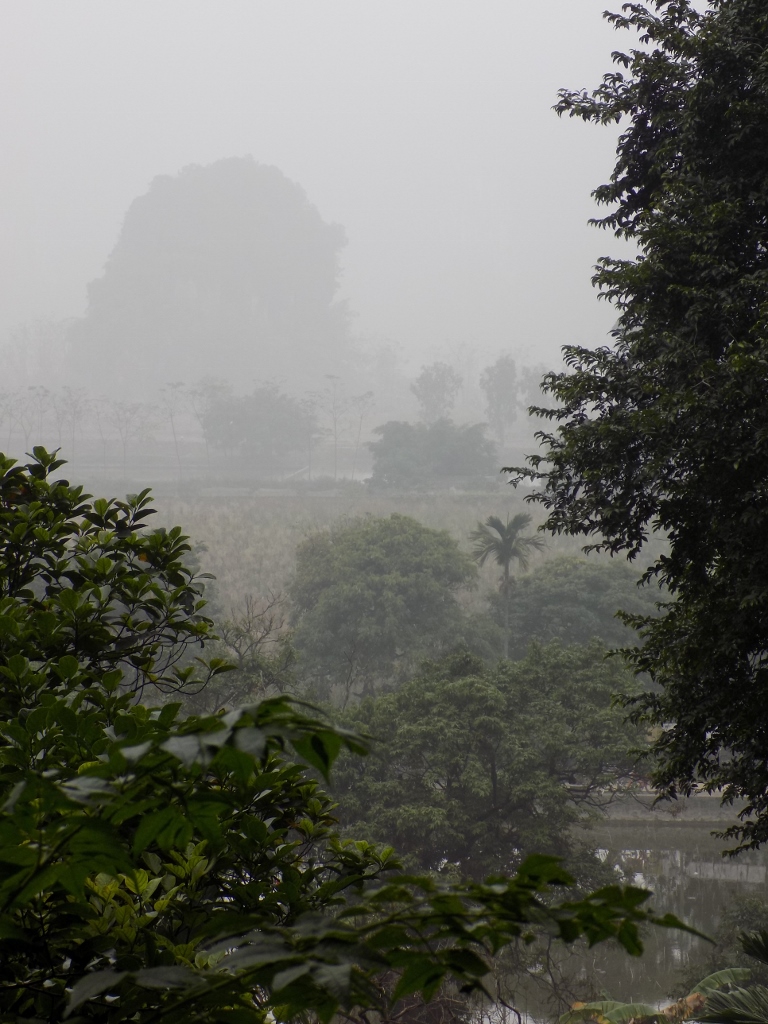 View from the level of the third Buddhist temple, the Bich Dong complex
View from the level of the third Buddhist temple, the Bich Dong complex
After a while, we went down, got our bicycles and returned to Tam Coc, but then we rode on to the other part of the town because we wanted to see a temple that was near the centre. Going along the main road leading to Ninh Binh, when we saw a sign at one crossroad we finally realized we had made a mistake, so we simply turned and went back to the centre of Tam Coc where we asked for directions.
It was still overcast, but I consoled myself saying it created a sense of mystique. Thus, I made a few stops in order to take photos of the landscapes and by chance I happened to be on a bridge under which passed a boat steered by a man who paddled in the traditional local way – with his legs.
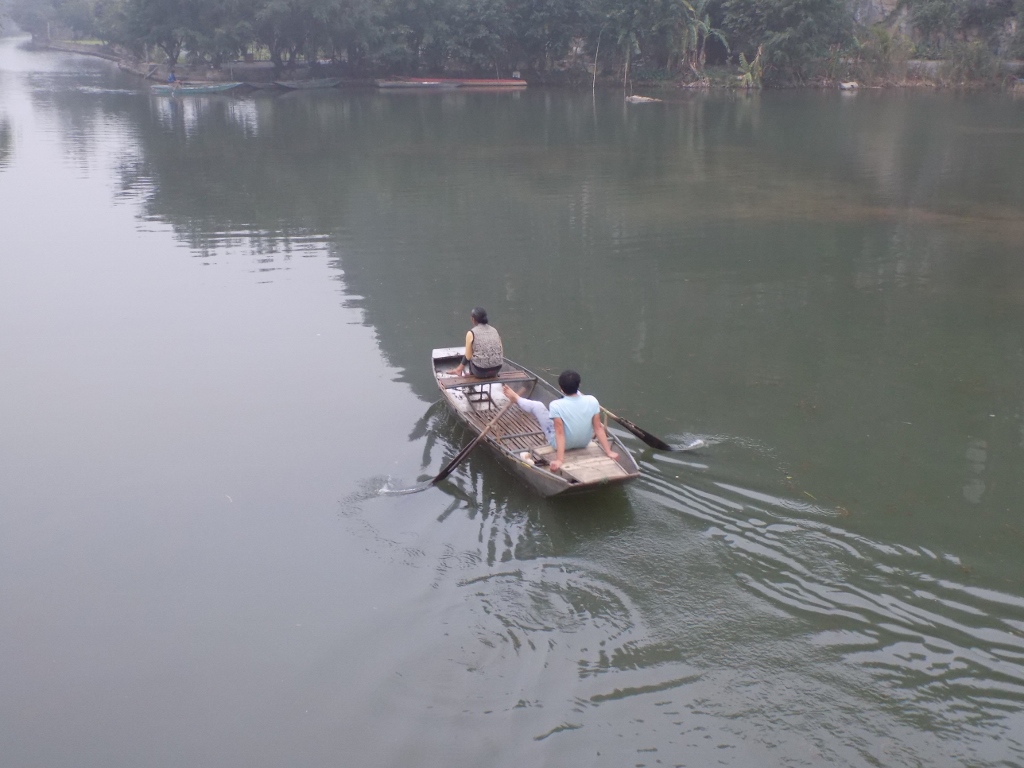 Traditional way of paddling a boat – with legs
Traditional way of paddling a boat – with legs
Soon we reached the temple of Thai Vi. Although the temple originally dates back to the 13th century, its latest reconstruction was done in 2006 and there were still some works being done in the courtyard when we got there. In addition to the visit to the temple, we were very honoured here attending a great concert – one instrument and one sound. Here, have a listen…
And that was the final activity for the day. For the next one, we practically rented a car with a driver in order to take us to a couple of places that we wanted to see and that were sufficiently far for us to go there by bikes. I’m not sure we would be able to return using the same mode of transportation.
The first on our list was the Hoa Lu site. These are remains of the first capital of Vietnam from the 10th century and the beginning of the 11th century. Little has survived to date and the modest museum exhibits only some stone slabs surrounded by ground including also the water that inundates the ground. There are, however, two temples – one dedicated to the Dinh dynasty that ruled here from 968 to 980 and the other dedicated to a monarch from the Le dynasty (980-1009).
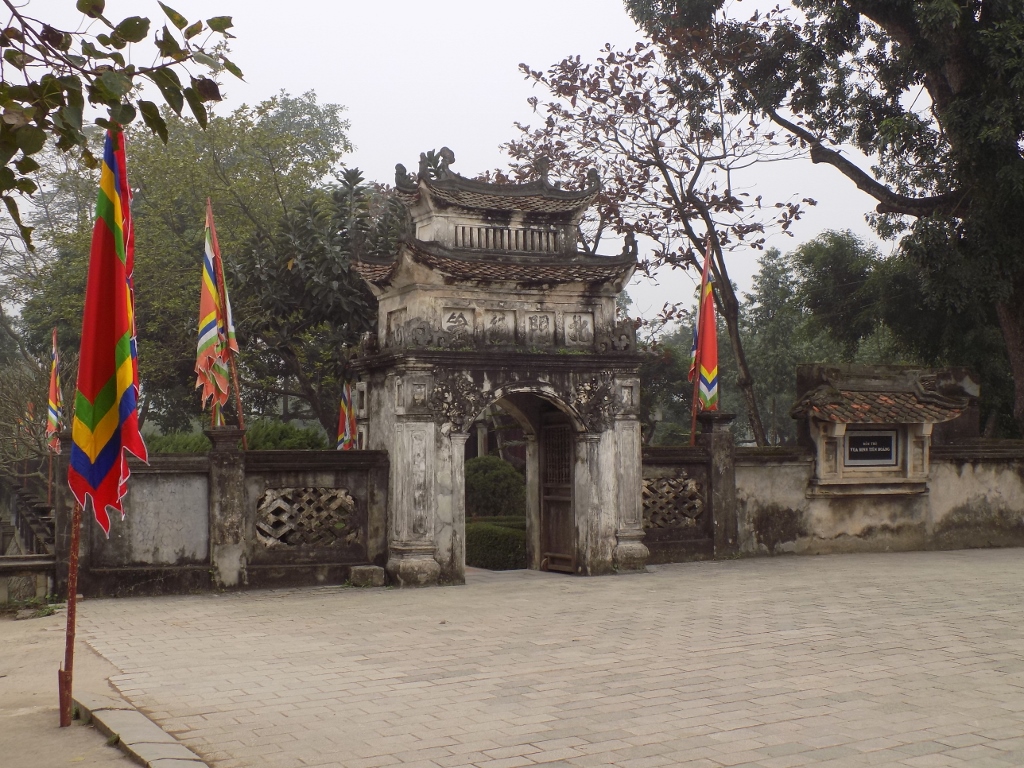 Hoa Lu, the first capital of Vietnam, entrance into the space belonging to the Dinh Tien Hoang temple
Hoa Lu, the first capital of Vietnam, entrance into the space belonging to the Dinh Tien Hoang temple
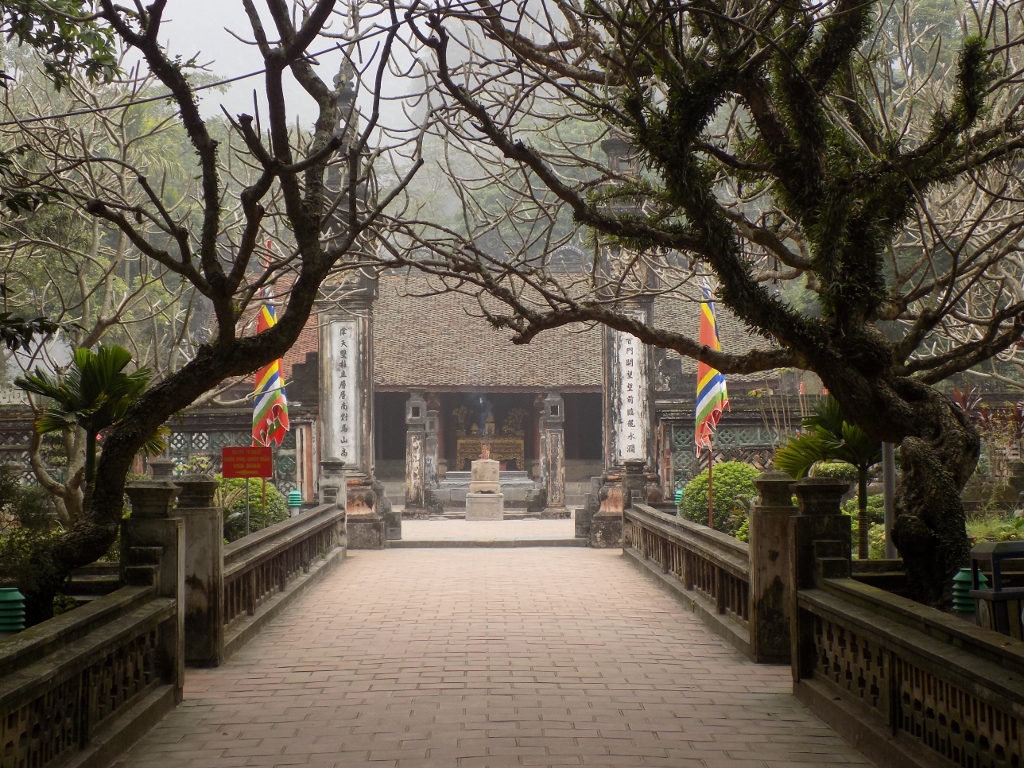 Hoa Lu, the Dinh Tien Hoang temple
Hoa Lu, the Dinh Tien Hoang temple
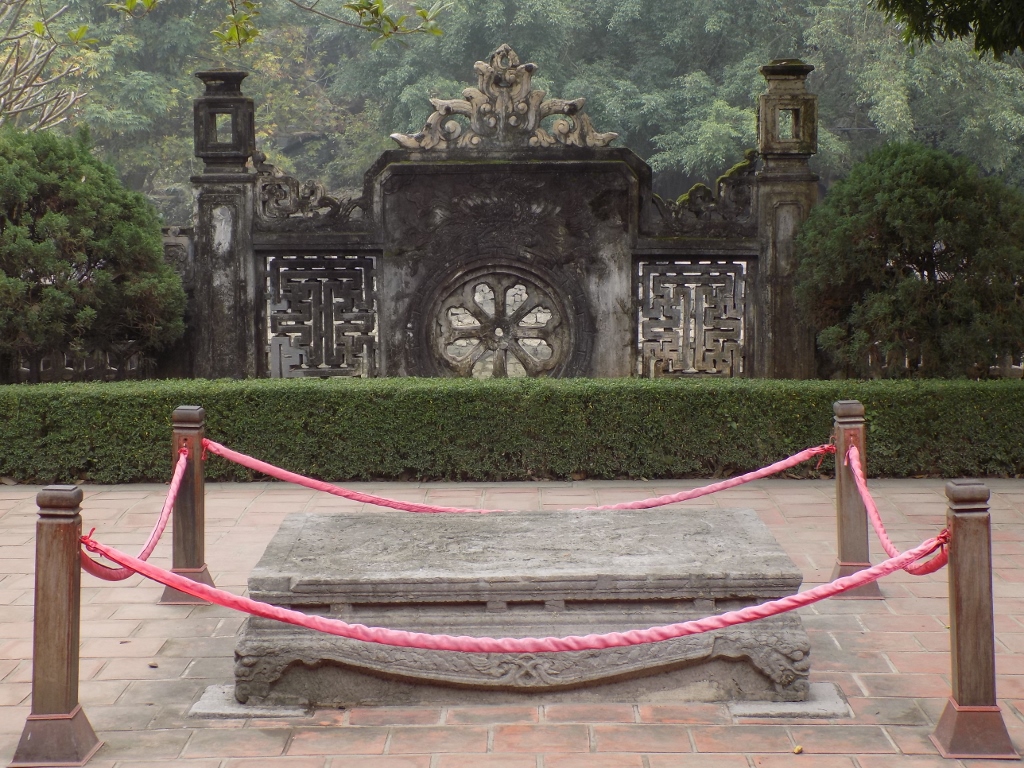 Hoa Lu, the Dinh Tien Hoang temple, stone pedestal for a royal throne
Hoa Lu, the Dinh Tien Hoang temple, stone pedestal for a royal throne
These two temples are some 200 metres one away from the other and we almost missed the other one, since the map of the site was rather unclear. It would be a pity. Although they appear quite similar, both of them have some specific atmosphere and are well worth the visit. On the other hand, both sites are active sanctuaries even today and in them people leave offerings of most diverse kinds. In one of them we came across a large decapitated head of a hog wrapped in pig peritoneum, but it was not allowed to take photos inside, so you have to take my word for it.
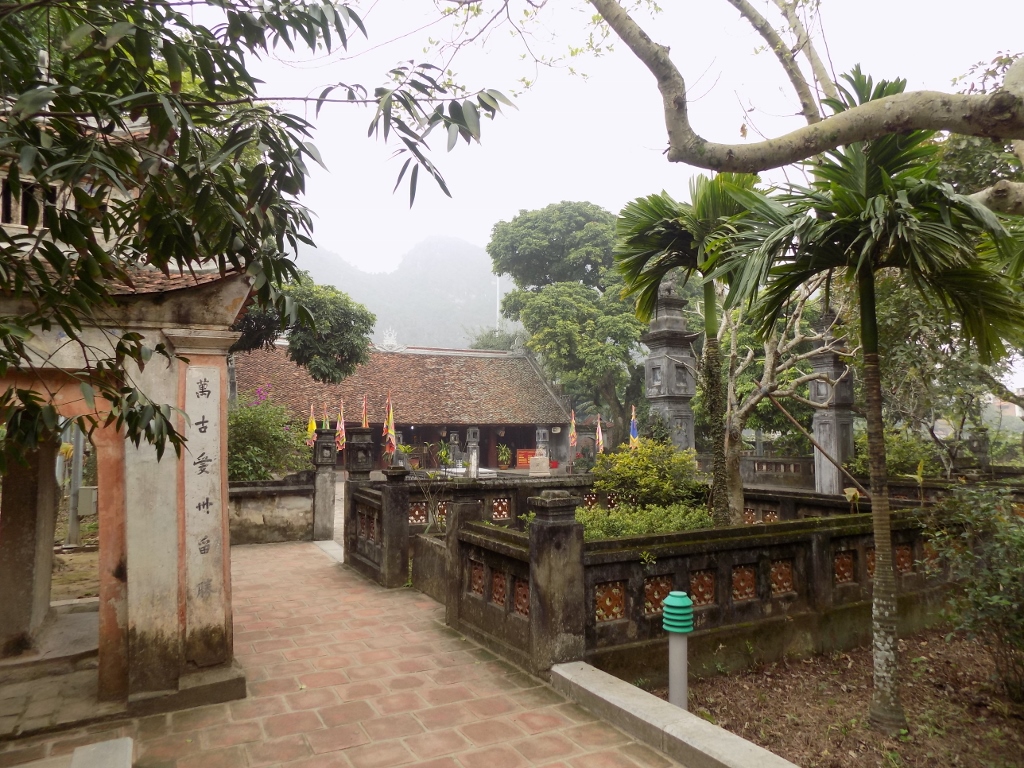 Hoa Lu, the Le Dai Hanh temple
Hoa Lu, the Le Dai Hanh temple
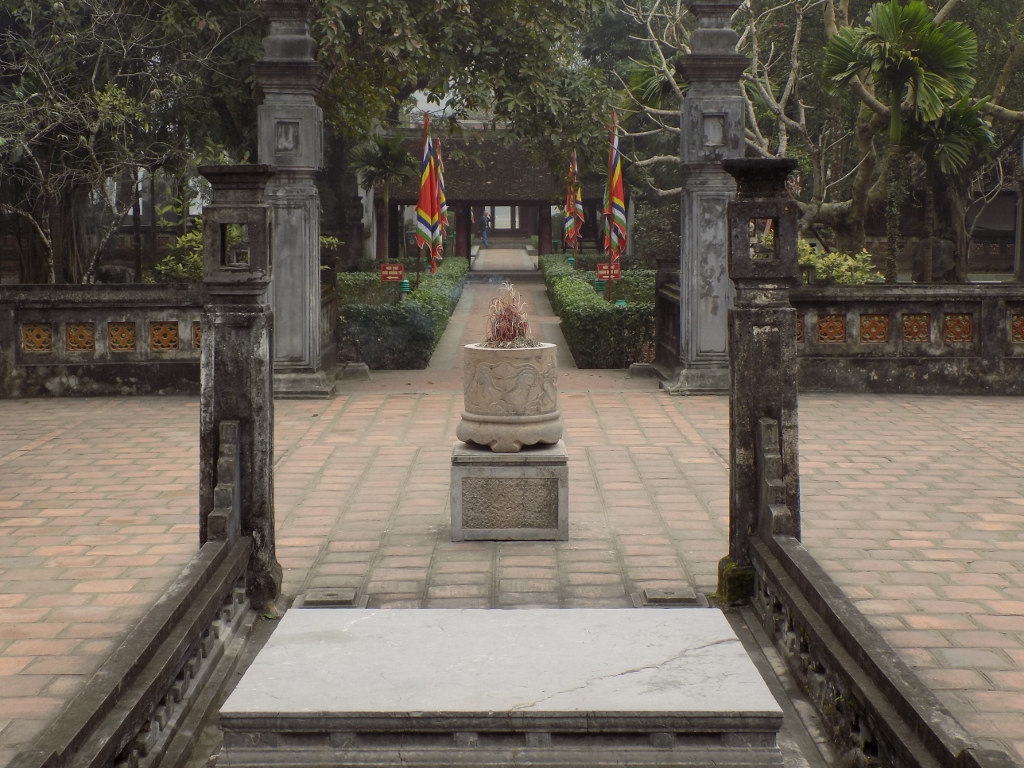 Hoa Lu, the Le Dai Hanh temple
Hoa Lu, the Le Dai Hanh temple
The map of the site exhibited near the ticket office showed that there were a couple of more pagodas in the vicinity and we also saw some kind of a road sign. We decided to head that way and the road led us through a village, as well as beside fields and a local cemetery.
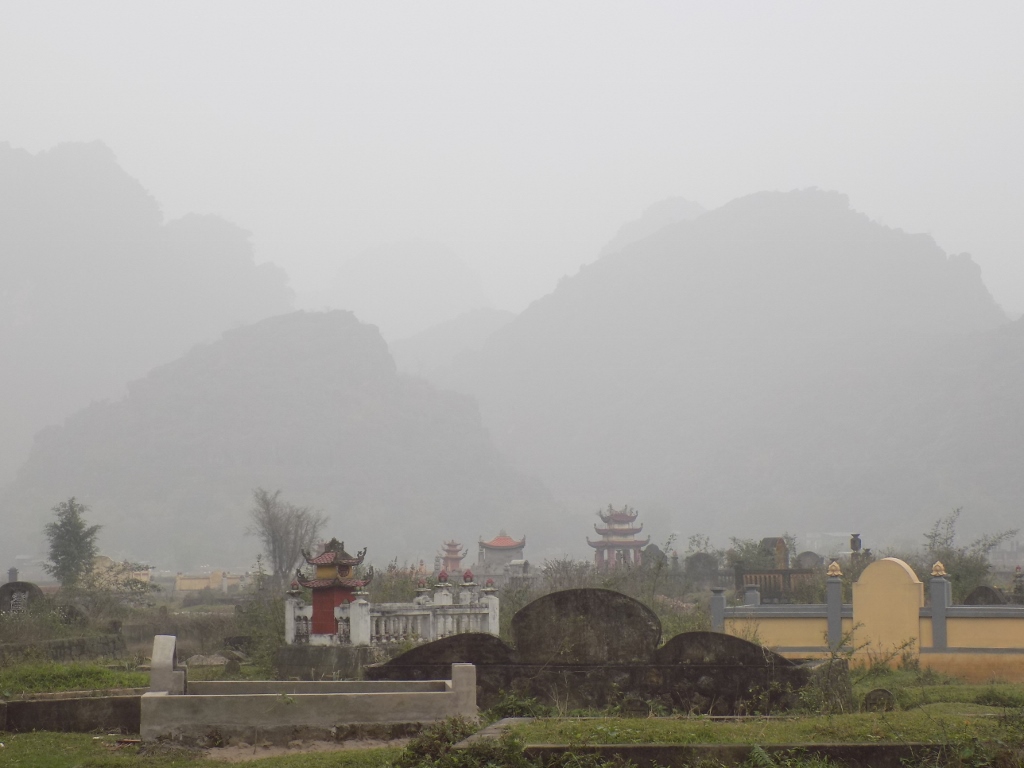 A cemetery near the Hoa Lu site
A cemetery near the Hoa Lu site
Then we came across a pagoda, but later I realized that it was none of the two “historic ones” we were hoping to see. The problem lied in the maps, unclear scales and the lack of meaningful road signs. Be as it may, we did drop here and we had no regrets, although we actually did not enter the sanctuary itself. The reason was that right at the time we were there, there was an ongoing prayer session. As much as we could see, a large number of women who were sitting on the floor were reading some prayers aloud in the rhythm given by a monk who was beating on a wooden instrument. We did not want to disturb them either by going in or by taking photos, so we only briefly recorded the sound. The moment was truly great and although we did not understand anything, it was sufficiently pleasant and attractive, so we stayed there for a while sitting without a word next to the central building.
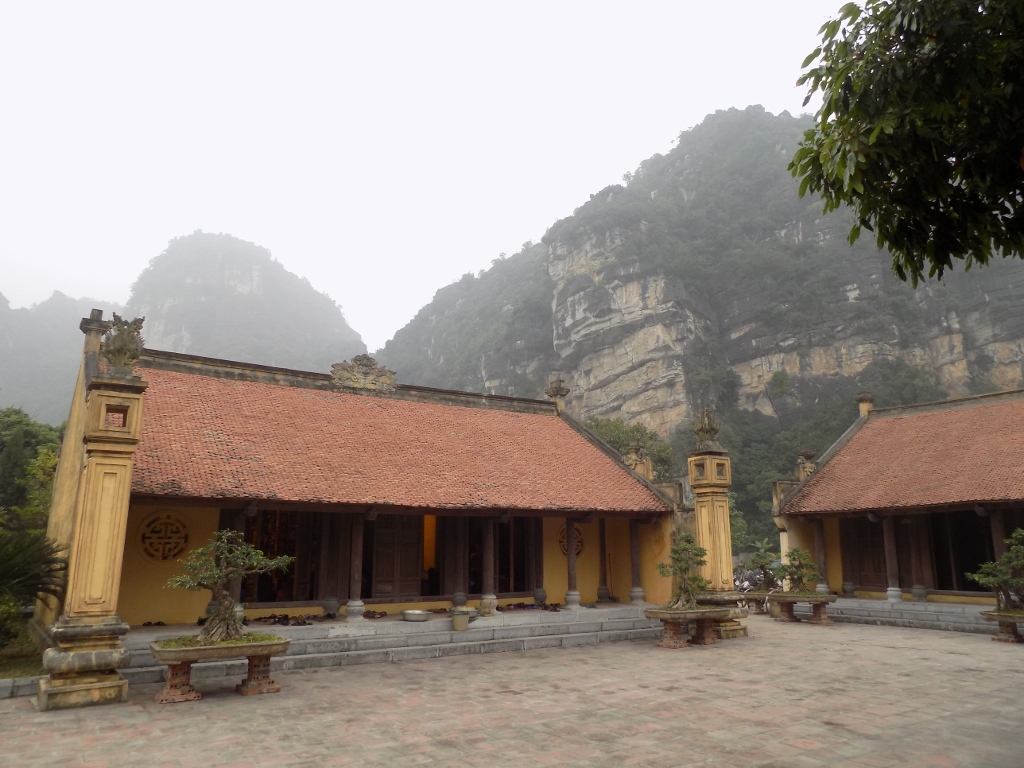 Pagoda with an ongoing prayer
Pagoda with an ongoing prayer
Here we also saw a large statue of female Buddha or, to be more precise, of Quan Am, the Bodhisattva of Compassion.
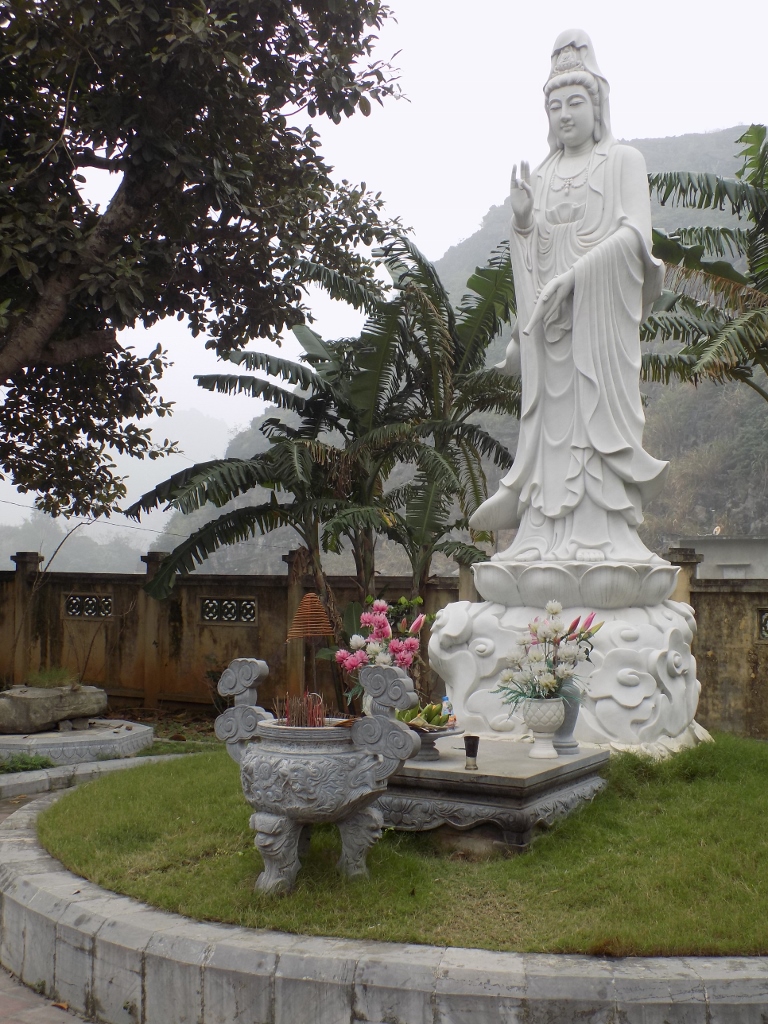 Quan Am, the Bodhisattva of Compassion
Quan Am, the Bodhisattva of Compassion
Afterwards the driver took us to the place from which one leaves in order to visit the Trang An site. This is a spectacular landscape and experience. Everything is sufficiently beautiful and unique that this site is included in the UNESCO’s World Heritage List. Actually, the cultural and natural property from the List includes Hoa Lu, the old capital, as well as this entire area which we passed through in these two days – Trang An, as well as Tam Coc and Bich Dong.
Once you get to the starting point in the visit of the Trang An complex, you first need to decide which of the two versions of the trip you want to do. In the first one, you visit four caves and a site where some King Kong film was made, while in the other one you visit nine caves. We opted for the trip with nine caves.
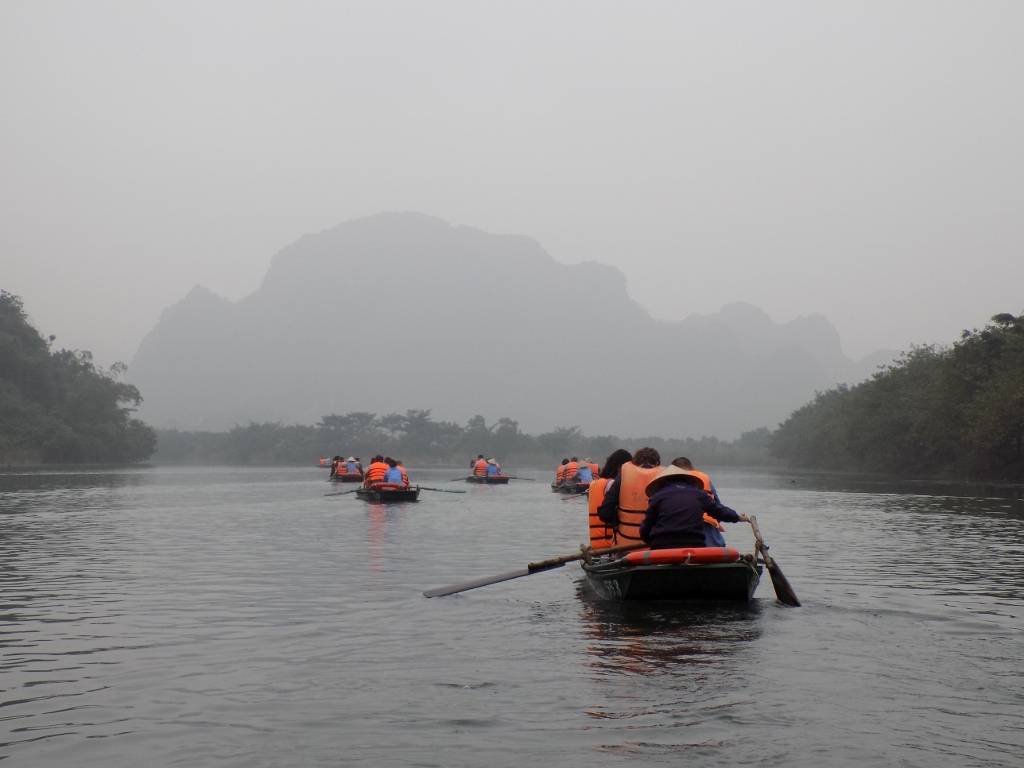 Trang An, beginning of the tour
Trang An, beginning of the tour
The main essence of this place is that you have a river and a large number of limestone formations, I have problems naming them hills or mountains, and then as it turns out the river has made its way not only around or between them, but also through them (!!!). In our boat there were three big European women and a tiny little Vietnamese one who was in charge of paddling. Admittedly, very soon she gave us some improvised paddles counting on the readiness of western tourists for whom a part of adventure also lies in helping for free people who are paid to do what is being done. Of course, we did not disappoint her and started paddling vigorously almost with a song and yet we moved at a speed as if only one person was paddling. I’m afraid, the “captain” of the boat was a wise woman with experience and she rested nicely while we worked hard.
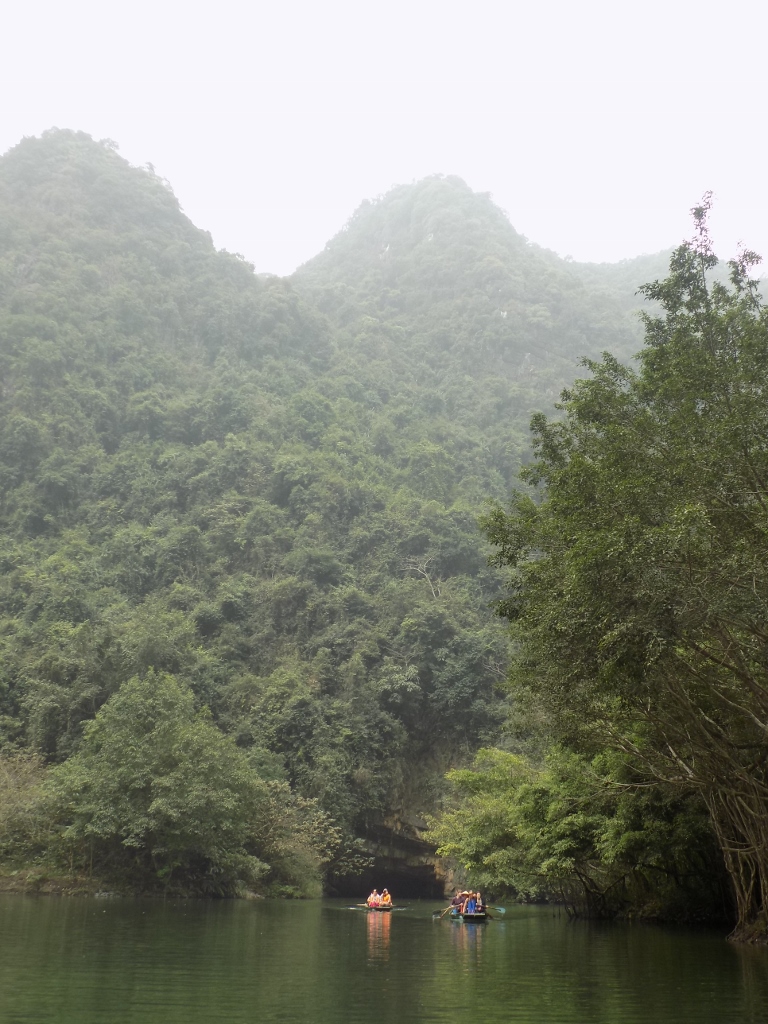 Trang An, in our boat we are entering the hole at the foot of the hill
Trang An, in our boat we are entering the hole at the foot of the hill
Still, looking at the water through which I drew my paddle, I realized it was the clearest water we were sailing on those days. Be as it may, the first of the caves we entered was the longest, as well as the lowest. We, the passengers, had to dive down in order not to hit a rock with their head, but the sensation first of getting under a huge rock formation and then of squeezing between stalactites was fantastic.
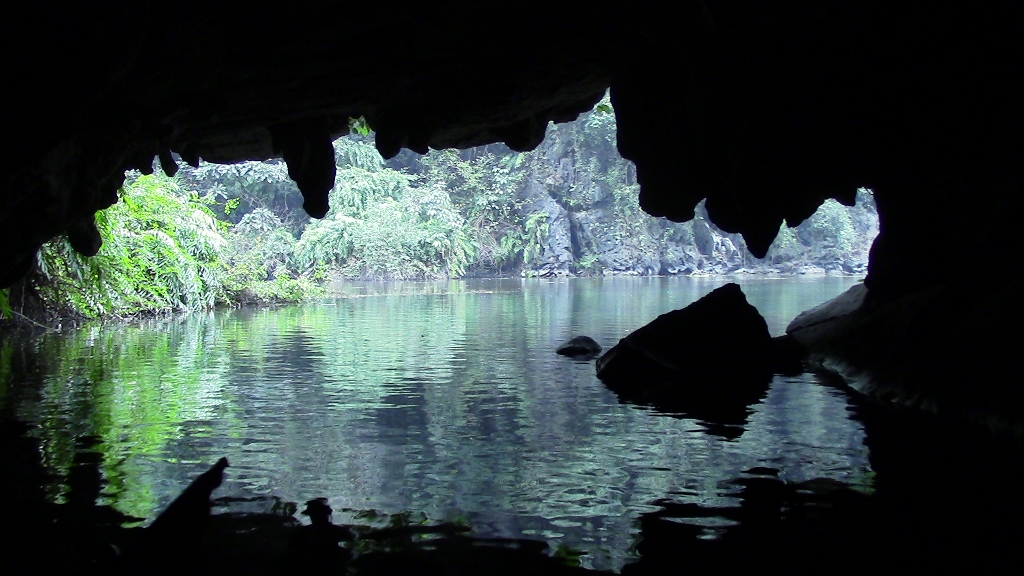 Trang An, a detail
Trang An, a detail
And then we slowly went out to a part that was completely surrounded by the high formations covered with dense vegetation, without any trace of civilization, except for our boat. The feeling was overwhelming. And so, we continued with the sequence several times. Other caves we went through we not as low, some had even been artificially expanded, but the impression was still fantastic. On a couple of occasions we also had an opportunity to go out to the shore in order to visit a temple or “enjoy” a live performance of a woman who sang some songs in incredibly monotonous voice. There was also a possibility to climb some stairs and go to some temples that were in the forest, but we were not particularly interested in that.
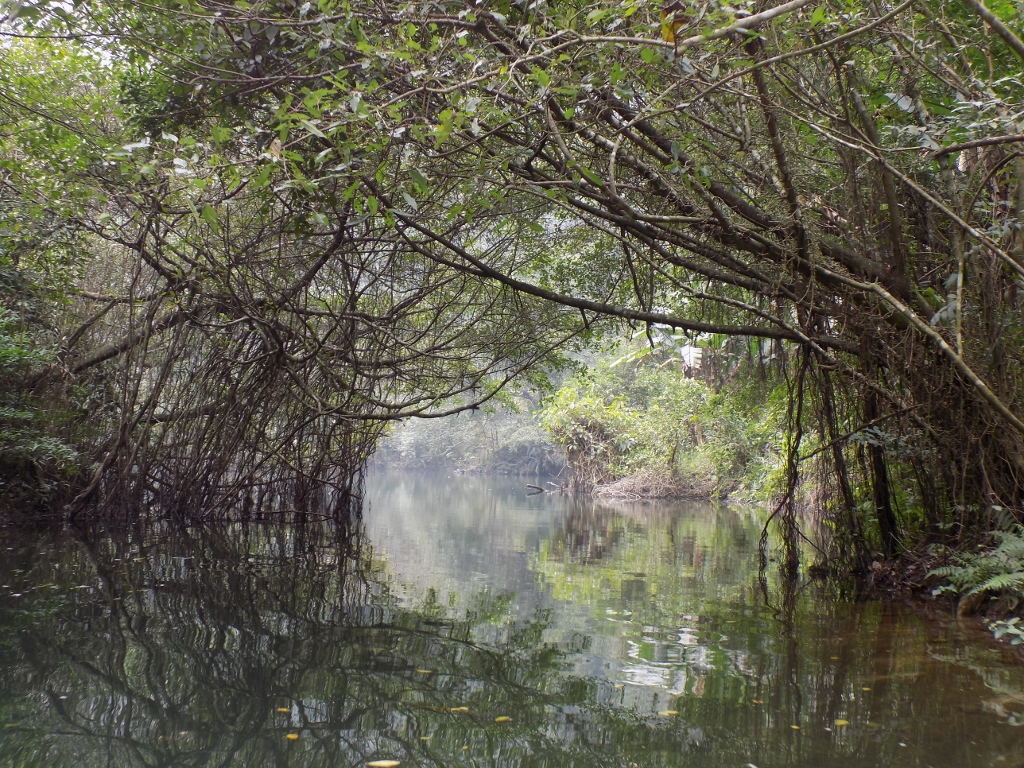 Trang An, a detail
Trang An, a detail
Still, it was interesting that at one temple that was a few steps above the level of the water, there were major preparations for some event going on. On our way back to the base from where we had left in the boat, we passed a large number of other boats with local population going in the opposite direction from us, obviously heading for the temple. The passing by in the narrow cave hallways was particularly “challenging” (a popular word nowadays).
Although the weather continued to be the same as earlier that day, we comforted ourselves by the fact that for passing through those caves, it actually did not matter at all what the weather was like.